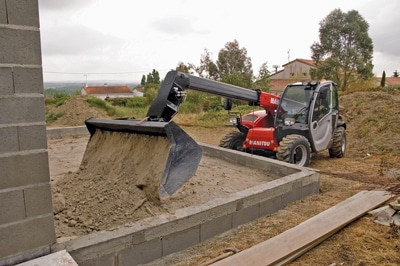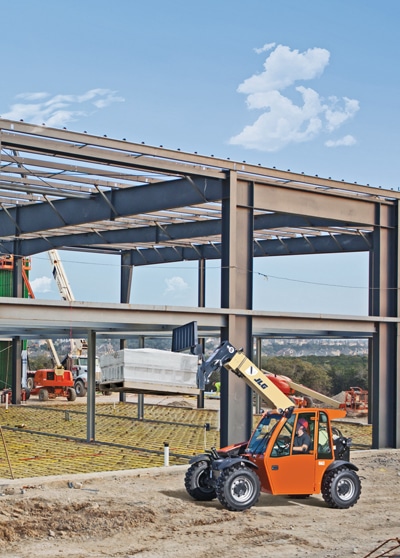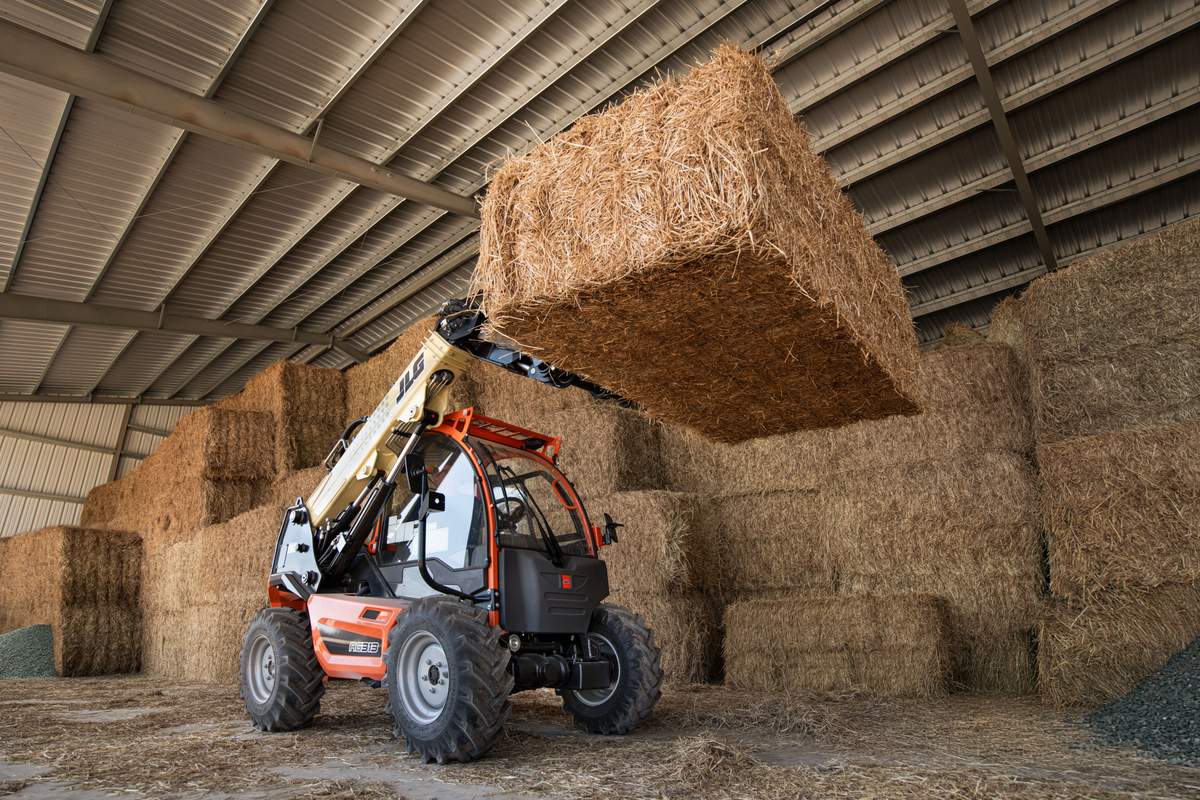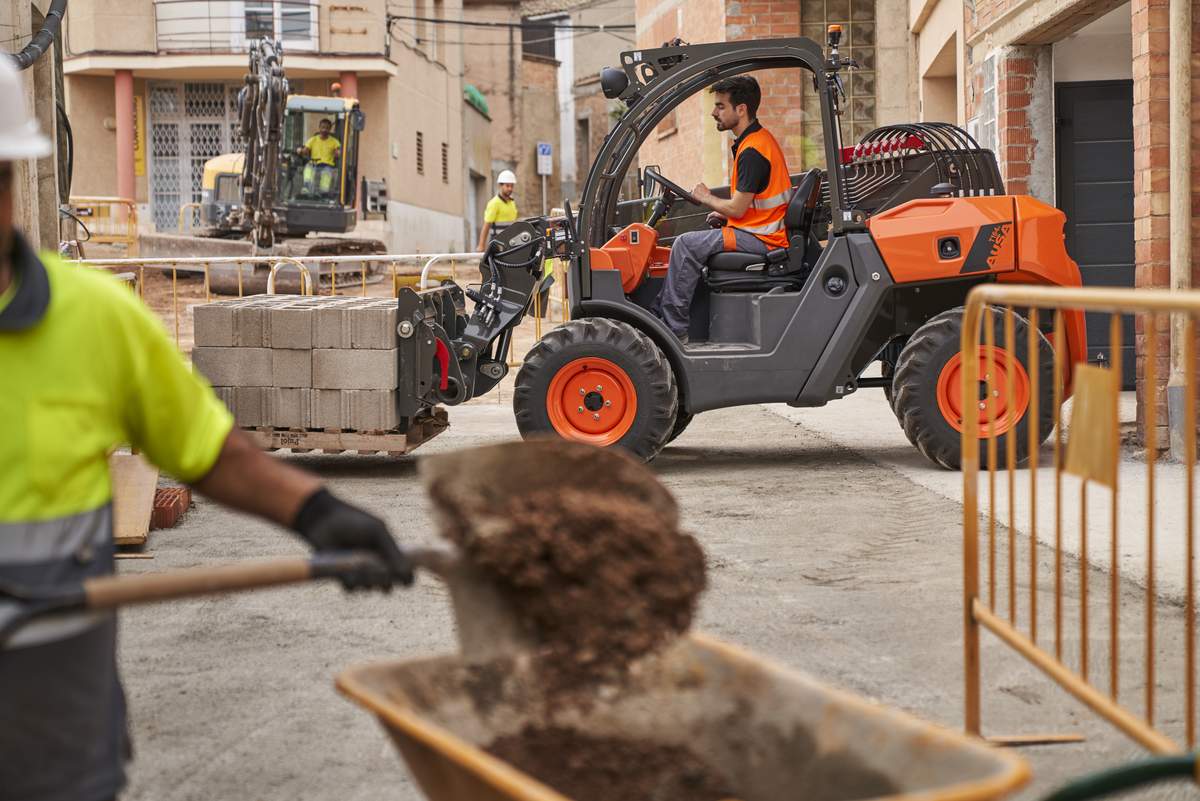We Wonder if the Compact Telehandler Is Becoming Popular in America
The compact telehandler is, in a word, handy. This machine’s size, reach and adaptability make it popular on jobsites from home construction to farming, but not really in America. Some 3,000 of the compact units are expected to be sold in the United States this year, according to four manufacturers we surveyed for this article. That number is only impressive until you remember that twice that many were sold in 2008, at which point the storied economic collapse stunted machine buying in general and the building industry in particular. But capital expenditures are slowly growing again and the market for compact telehandlers is growing faster than the overall telehandler market — especially with potential untapped markets like landscape and ag — which are popular sectors overseas.
“The versatility of compact telehandlers has been the driver of their popularity in Europe,” says Stuart Fox, product manager for JCB telescopic handlers. JCB’s compact model is the 525-60 Hi-Viz for construction applications, with two slightly different models targeting ag customers. “In this country, we are used to seeing many kinds of machines on one jobsite. Our customers now are learning that while they may need the features of those many machines, they may not need all the machines. We believe the trend going forward is to consolidate the equipment fleet and lower cost of ownership, manpower and insurance.” The compact telehandler is a beneficiary of that trend.
What makes a compact telehandler, exactly? Telehandlers described as “compact” weigh about 10,000 lbs. They generally are 6 to 7 ft tall, around 12 ft long and 6 ft wide. The two-stage booms on these machines can reach outward about 11 ft and upward 18 to 19 ft. Lift capacity is around 5,500 lbs. Like their big brothers, they offer four-wheel steering, two-wheel steering and crab steering. They also have hydrostatic transmissions, speeds up to 15 mph and turning radii of 11 ft plus or minus. Unlike their larger variants, compact telehandlers are also focused on using attachments (from brooms to buckets), as well as pick-and-place staples like pallet forks.
“One of the reasons we have seen this segment of the market grow is overall versatility of these machines,” explains Brian Boeckman, global product director for telehandlers at JLG Industries. “Our customers are having success with these machines in very diverse applications.”
Along with diversity (think attachments), you can add two other words to describe compact telehandlers: nimble and strong. These three characteristics are fueling the machine’s market. “Customers are realizing they can get in one compact offering a machine that basically eliminates previous types of tool carriers and allows use of attachments already in the equipment yard,” says Fox.
The rental market is where most compact telehandlers find a home in North America. Owner-operators of the machine are not unknown, of course, but manufacturers bank on equipment rental companies snatching up most of their production. From there, the compact units move onto construction sites or into landscape operations and municipal fleets. This reflects the growing preference of contractors to rent rather than own machinery assets.

Manitou has introduced three new compact models in the last year and a half to meet customer demand, including this MT625.
The agricultural side of the compact telehandler market is seen as especially promising. “In the U.S. and across North America, ag use is really in a very early stage,” says Steve Kiskunas, telescopic handler product manager for Manitou Group. “In Europe, the market is much further along in agriculture. We are probably 20 years behind in how they are using these products there, so agriculture is a growing opportunity for us. Whereas on the construction-rental side, the market is more mature because customers are very familiar with telescopic handlers on a jobsite.”
Manitou has introduced three new compact models in the last year and a half to meet customer demand. Among its stable of small machines are the MT625 and MLT625, the latter having the automatic reversing cooling fans and larger hydrostatic pumps typical of agricultural models. Also offered is the Gehl RS519 (and an equivalent Manitou MT 5519 model). These two machines target the rental-construction market, but also appeal to landscapers when outfitted with solid and turf tires. Their different design reflects Gehl’s North American heritage: The 519 and 5519 are manufactured in Yankton, S.D., while all other Manitou machines are made in France.
The quickening compact market induced JLG to redesign its G5-18A two years ago. JLG also builds telehandlers for Caterpillar, but the machines are not identical. The new generation has a Tier 4 Final Deutz engine, a more comfortable cab and a reverse sensing system that detects objects behind the machine when backing up. It also features a “lift-loader” power switch by which an operator can tailor the machine’s joystick operation to his or her preferences.
Joysticks were made more joyful in some newer models. Manitou’s patented JSM joystick allows the operator to control all of the machine, boom and hydraulic movements with one hand free to steer. Roller switches control boom extension/retraction and auxiliary hydraulics, and a rocker switch controls the direction of travel. Over at JCB, the 516-40 also offers an all-in-one joystick for boom and directional control.
The 516-40 is JCB’s brand-new replacement for three older models. Among other things, the new model features a three-position parking brake that lets an operator make an emergency stop gradually instead of stopping abruptly with possible disastrous consequences when a boom is extended. With rental customers in mind, JCB also designed a cab without curvature in its windows. Explains Fox: “Every piece of glass on the unit is flat. When a rental customer breaks any of the glass, curved glass is more expensive and has to be ordered from OEM sources. If one of our windows is broken, you can buy a replacement pane at the glass store down the street. This is a big deal to rental companies.”
Cabin comfort is high in all the compacts, which is pretty much expected in small machines that can cost, depending on options, from $50,000 to $80,000. Each manufacturer is out to make operators happy, with cabins boasting ergonomic controls, extra sound insulation, comfortable seats, easy visibility and smooth operation. “A comfortable operator will be a more productive operator,” says Fox. “If you are staying in a machine, you are getting the job done.”
The Terex/Genie GTH 5519 was born and bred in Europe. Transplanted to North America, it has been tailored to this market and regularly updated, says Anders Mantere, telehandler product manager. The GTH 5519 is powered by a Deutz diesel engine that meets emissions standards without add-ons that can reduce engine performance. Its Genie Quick-Attach system makes switching from one attachment to another an easy chore. Common attachments are pallet forks of various sizes, of course, as well as multipurpose buckets, grapple buckets, work platforms and the universal skid steer adapter.
With the compact machine gobbling up a larger share of the telehandler market, the question is, will it ultimately cannibalize a manufacturer’s full-size telehandler lineup rather than take market share from other compact brands? Mantere doesn’t think that will happen. “The full-size and compact telehandlers complement each other well. The compact unit is not a niche market. It is more an application of the technology.”
Fox of JCB agrees. “There is always going to be a need for a full-size telehandler. You’re never going to replace it.”
Giles Lambertson is a freelance writer for Compact Equipment.






Comments are closed here.